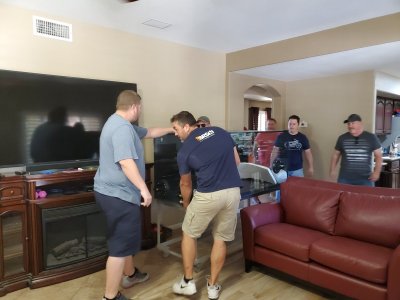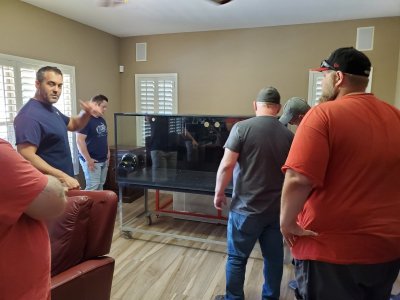- Joined
- Jun 19, 2017
- Messages
- 55
- Reaction score
- 91
Leading up to this build
I’ve been working on the design of and slowly acquiring equipment for this build for several months now so bear with me as these first few posts will be long. After this, I’ll try to update my progress on a regular basis.
I started reefing close to three years ago and like many of my hobbies, I jumped in with both feet. My first tank was a Planet Aquarium 120 gallon rimless with Starphire Glass. Despite the extensive research I did beforehand, I learned quite a few lessons both in starting and running that tank over these last few years. Even though it took some initial convincing for my wife, she quickly found her place in the hobby as well. While I’m all about the equipment and operation, she has fallen in love with the fish and coral. At this point, she can name more corals by sight than I can. I’ll spare you the details of the 120 tank progression as this thread is about my dream tank 250 build.
In January of 2019 we decided to move to a new home. I felt this was a perfect time to upgrade the tank and do some things I wished I had done in the beginning. It really didn’t take much convincing for my wife to jump on board and she quickly began enabling my desires. We purchased our home earlier this year and rented it back to the previous owners while they had a house built so I have had several months to plan and design this build. We just moved in the first week of October and I am finally able to start putting things together.

I’ve been working on the design of and slowly acquiring equipment for this build for several months now so bear with me as these first few posts will be long. After this, I’ll try to update my progress on a regular basis.
I started reefing close to three years ago and like many of my hobbies, I jumped in with both feet. My first tank was a Planet Aquarium 120 gallon rimless with Starphire Glass. Despite the extensive research I did beforehand, I learned quite a few lessons both in starting and running that tank over these last few years. Even though it took some initial convincing for my wife, she quickly found her place in the hobby as well. While I’m all about the equipment and operation, she has fallen in love with the fish and coral. At this point, she can name more corals by sight than I can. I’ll spare you the details of the 120 tank progression as this thread is about my dream tank 250 build.
In January of 2019 we decided to move to a new home. I felt this was a perfect time to upgrade the tank and do some things I wished I had done in the beginning. It really didn’t take much convincing for my wife to jump on board and she quickly began enabling my desires. We purchased our home earlier this year and rented it back to the previous owners while they had a house built so I have had several months to plan and design this build. We just moved in the first week of October and I am finally able to start putting things together.




















